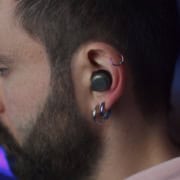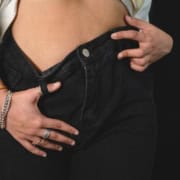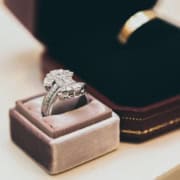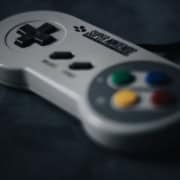Embracing Your Unique Beauty: Piercing and Body Positivity
Body piercing boasts a rich and diverse history spanning numerous cultures and epochs. Evidence of piercings has been discovered in ancient Egyptian mummies and amongst various indigenous tribes worldwide. In many societies, body piercings served as a means of self-expression, as well as fulfilling religious and spiritual purposes.
For instance, in ancient India, nose piercings symbolised marriage and social standing, whilst in ancient Rome, nipple piercings denoted strength and virility among soldiers. In more recent times, body piercing has been associated with various subcultures, such as punk and goth movements, where piercings were employed as a form of rebellion against mainstream aesthetic norms. However, in the contemporary era, body piercing has become more widely accepted as a form of self-expression and personal style.
Today, individuals from all walks of life opt for body piercings as a means of adorning their bodies and expressing their individuality. The cultural significance of body piercing continues to evolve, with new trends and styles emerging to reflect changing attitudes towards beauty and self-expression. Body piercing possesses a long and intriguing history that traverses diverse cultures and time periods.
From ancient rituals to modern fashion statements, the practice of body piercing has always been deeply rooted in cultural significance. Throughout history, body piercings have been utilised as a form of self-expression, religious and spiritual symbolism, and even as a means of rebellion against societal norms. In many indigenous tribes globally, body piercings were regarded as a rite of passage and a way to connect with the spiritual realm.
Today, body piercing continues to be a powerful form of self-expression and personal style, with people from all backgrounds choosing to adorn their bodies with piercings that reflect their individuality and unique aesthetic preferences.
Summary
- Body piercing has a rich history dating back thousands of years, with cultural significance in various societies around the world.
- Body positivity is challenging traditional beauty standards and encouraging individuals to embrace their unique beauty, including body piercings as a form of self-expression.
- There are various types of body piercings, from ear and nose piercings to more unconventional ones like dermal and surface piercings.
- Addressing misconceptions and stereotypes about body piercings is crucial in overcoming stigma and promoting acceptance and understanding.
- Body piercings can empower individuals by allowing them to express themselves and boost their confidence, contributing to their overall self-expression and identity.
Embracing Your Unique Beauty: How Body Positivity is Changing the Beauty Standards
In recent years, there has been a growing movement towards body positivity, which aims to challenge traditional beauty standards and promote self-acceptance and self-love. This movement has had a significant impact on the beauty industry, with more diverse representations of beauty being celebrated in mainstream media and advertising. Body positivity encourages individuals to embrace their unique beauty and celebrate their bodies, regardless of size, shape, or appearance.
This has led to a shift in the way beauty is perceived, with a greater emphasis on inclusivity and diversity. The body positivity movement has also had a profound impact on the way people view body piercings. In the past, body piercings were often associated with certain beauty ideals and subcultures, but today, they are seen as a form of self-expression that can enhance one’s natural beauty.
People are now encouraged to embrace their individuality and adorn their bodies in ways that make them feel confident and empowered. This shift in attitude towards beauty and self-expression has created a more inclusive and accepting environment for those with body piercings, allowing them to feel comfortable and confident in their own skin. The rise of the body positivity movement has brought about a significant shift in the way beauty is perceived and celebrated.
This movement has challenged traditional beauty standards and promoted self-acceptance and self-love, encouraging individuals to embrace their unique beauty regardless of societal norms. As a result, there has been a greater emphasis on inclusivity and diversity in mainstream media and advertising, with more diverse representations of beauty being celebrated. This shift in attitude towards beauty has also had a profound impact on the way people view body piercings.
In the past, body piercings were often associated with certain beauty ideals and subcultures, but today, they are seen as a form of self-expression that can enhance one’s natural beauty. The body positivity movement has created a more inclusive and accepting environment for those with body piercings, allowing them to feel comfortable and confident in their own skin.
The Art of Piercing: Exploring Different Types of Body Piercings

Body piercing is a form of art that allows individuals to adorn their bodies with beautiful and intricate designs. There are many different types of body piercings that can be done on various parts of the body, each with its own unique aesthetic and cultural significance. Some of the most popular types of body piercings include ear piercings, nose piercings, lip piercings, eyebrow piercings, tongue piercings, nipple piercings, navel piercings, and genital piercings.
Each type of piercing requires careful consideration of placement, jewellery selection, and aftercare to ensure a safe and successful outcome. Ear piercings are perhaps the most common type of body piercing, with options ranging from simple lobe piercings to more elaborate cartilage piercings. Nose piercings are also popular and can be done on either side of the nostril or through the septum.
Lip piercings come in various forms, including labret piercings, Monroe piercings, and snake bites. Eyebrow piercings are another popular choice for those looking to add a unique touch to their appearance. Tongue piercings are known for their bold and edgy look, while nipple and navel piercings are often chosen for their sensual appeal.
Genital piercings are more intimate and can be done for both aesthetic and sexual reasons. With so many options available, body piercing truly is an art form that allows individuals to express themselves in creative and meaningful ways. Body piercing is a form of art that allows individuals to adorn their bodies with beautiful and intricate designs.
There are many different types of body piercings that can be done on various parts of the body, each with its own unique aesthetic and cultural significance. Ear piercings are perhaps the most common type of body piercing, with options ranging from simple lobe piercings to more elaborate cartilage piercings. Nose piercings are also popular and can be done on either side of the nostril or through the septum.
Lip piercings come in various forms, including labret piercings, Monroe piercings, and snake bites. Eyebrow piercings are another popular choice for those looking to add a unique touch to their appearance. Tongue piercings are known for their bold and edgy look, while nipple and navel piercings are often chosen for their sensual appeal.
Genital piercings are more intimate and can be done for both aesthetic and sexual reasons. Each type of piercing requires careful consideration of placement, jewellery selection, and aftercare to ensure a safe and successful outcome.
Overcoming Stigma: Addressing Misconceptions and Stereotypes about Body Piercings
| Topic | Metrics |
|---|---|
| Number of body piercing studios | 500 |
| Percentage of people with body piercings | 30% |
| Common misconceptions | 60% |
| Percentage of people who believe body piercings are unprofessional | 40% |
| Percentage of people who believe body piercings are a form of self-expression | 80% |
Despite the growing acceptance of body piercings in modern society, there are still many misconceptions and stereotypes surrounding this form of self-expression. Some people view body piercings as unprofessional or unsightly, associating them with rebellion or deviance. However, these stereotypes are often based on outdated beliefs and do not reflect the diverse range of individuals who choose to get body piercings.
In reality, people from all walks of life have body piercings, including professionals, parents, athletes, and artists. It is important to address these misconceptions and challenge the stigma surrounding body piercings. By promoting education and understanding about the cultural significance of body piercing, as well as the safety and hygiene practices involved, we can help dispel negative stereotypes and create a more inclusive environment for those with body piercings.
It is also important for individuals with body piercings to feel empowered to express themselves without fear of judgement or discrimination. By embracing diversity and celebrating different forms of self-expression, we can work towards creating a more accepting society where everyone feels comfortable being themselves. Despite the growing acceptance of body piercings in modern society, there are still many misconceptions and stereotypes surrounding this form of self-expression.
Some people view body piercings as unprofessional or unsightly, associating them with rebellion or deviance. However, these stereotypes are often based on outdated beliefs and do not reflect the diverse range of individuals who choose to get body piercings. In reality, people from all walks of life have body piercings, including professionals, parents, athletes, and artists.
It is important to address these misconceptions and challenge the stigma surrounding body piercings by promoting education and understanding about the cultural significance of body piercing as well as the safety and hygiene practices involved. By doing so, we can help dispel negative stereotypes and create a more inclusive environment for those with body piercings.
Self-Expression and Confidence: How Body Piercings can Empower Individuals
Body piercings have the power to empower individuals by allowing them to express themselves in unique and meaningful ways. For many people, getting a body piercing is a form of self-expression that helps them feel more confident in their own skin. Whether it’s a simple ear piercing or a more elaborate facial or body piercing, the act of adorning one’s body can be incredibly empowering.
Body piercings also serve as a reminder of personal strength and resilience for many individuals. The process of getting pierced requires courage and determination, as well as a willingness to embrace change and step outside one’s comfort zone. This act of bravery can have a profound impact on an individual’s sense of self-worth and confidence.
In addition to empowering individuals on a personal level, body piercings also play a role in promoting diversity and inclusivity within society. By celebrating different forms of self-expression and challenging traditional beauty standards, we can create a more accepting environment where everyone feels comfortable being themselves. Body piercings have the power to empower individuals by allowing them to express themselves in unique and meaningful ways.
For many people, getting a body piercing is a form of self-expression that helps them feel more confident in their own skin. Whether it’s a simple ear piercing or a more elaborate facial or body piercing, the act of adorning one’s body can be incredibly empowering. Body piercings also serve as a reminder of personal strength and resilience for many individuals.
The process of getting pierced requires courage and determination, as well as a willingness to embrace change and step outside one’s comfort zone. This act of bravery can have a profound impact on an individual’s sense of self-worth and confidence.
Embracing Diversity: Celebrating Different Body Types and Beauty Standards

The beauty industry has historically been dominated by narrow beauty standards that promote unrealistic ideals of perfection. However, there has been a growing movement towards embracing diversity in beauty that celebrates different body types and beauty standards. This shift towards inclusivity has had a positive impact on how beauty is perceived, with more diverse representations being celebrated in mainstream media.
Body piercing plays an important role in promoting diversity within the beauty industry by allowing individuals to express themselves in unique ways that celebrate their individuality. Whether it’s through ear piercings that frame the face or belly button piercings that accentuate the waistline, body piercings can enhance one’s natural beauty in creative ways that defy traditional beauty standards. By embracing diversity in beauty standards and celebrating different forms of self-expression, we can create a more inclusive environment where everyone feels comfortable being themselves.
This shift towards inclusivity has the power to challenge outdated beauty norms and promote self-acceptance for people from all walks of life. The beauty industry has historically been dominated by narrow beauty standards that promote unrealistic ideals of perfection. However, there has been a growing movement towards embracing diversity in beauty that celebrates different body types and beauty standards.
This shift towards inclusivity has had a positive impact on how beauty is perceived, with more diverse representations being celebrated in mainstream media. Body piercing plays an important role in promoting diversity within the beauty industry by allowing individuals to express themselves in unique ways that celebrate their individuality.
Navigating the Journey: Tips for Embracing Your Unique Beauty and Body Positivity
Embracing your unique beauty is an empowering journey that requires self-love, acceptance, and confidence. If you’re considering getting a body piercing or simply want to enhance your natural beauty through self-expression, here are some tips for navigating this journey: 1. Self-Love: Embrace your unique features and celebrate what makes you different from others.
2.
Education: Research different types of body piercings to find one that resonates with your personal style.
3. Professionalism: Choose an experienced professional for your piercing to ensure safety and hygiene.
4. Aftercare: Follow proper aftercare instructions to ensure your piercing heals properly.
5.
Confidence: Wear your piercing with pride and confidence – it’s an expression of your unique beauty. Navigating the journey towards embracing your unique beauty is an empowering experience that requires self-love, acceptance, and confidence. Whether you’re considering getting a body piercing or simply want to enhance your natural beauty through self-expression, it’s important to approach this journey with an open mind and positive attitude.
In conclusion… Body piercing has a rich history that spans across different cultures and time periods – from ancient rituals to modern fashion statements – making it an important form of self-expression with cultural significance.
The rise of the body positivity movement has challenged traditional beauty standards by promoting inclusivity and diversity – creating an environment where everyone feels comfortable being themselves.
There are many different types of body piercings that allow individuals to express themselves in unique ways – each requiring careful consideration for placement, jewellery selection, and aftercare.
It’s important to address misconceptions about body piercing by promoting education about its cultural significance – creating an inclusive environment where everyone feels comfortable expressing themselves.
Body piercing has the power to empower individuals by allowing them to express themselves confidently – serving as a reminder of personal strength while promoting diversity within society.
Embracing diversity in beauty standards is essential for creating an inclusive environment where everyone feels comfortable expressing themselves – challenging outdated norms while celebrating individuality.
Navigating the journey towards embracing your unique beauty requires self-love, education about different types of body piercing professionalism when choosing an experienced professional aftercare for proper healing confidence when wearing your piercing proudly.
In conclusion… Body piercing has a rich history that spans across different cultures making it an important form of self-expression with cultural significance.
The rise of the body positivity movement has challenged traditional beauty standards by promoting inclusivity – creating an environment where everyone feels comfortable being themselves.
There are many different types of body piercings that allow individuals
If you’re interested in learning more about body piercing and how it can contribute to body positivity, check out this article on The Piercing Places website. They have a blog post that discusses the top 10 frequently asked questions about body piercing, which can provide valuable information for anyone considering getting a piercing. You can read the full article here.
FAQs
What is body positivity?
Body positivity is a social movement that advocates for the acceptance and celebration of all body types, promoting the idea that all bodies are valuable and worthy of respect.
What is piercing?
Piercing is the practice of puncturing or cutting a part of the body to create an opening in which jewellery can be worn. This can include ear, nose, lip, tongue, eyebrow, and belly button piercings, among others.
How does body positivity relate to piercing?
Body positivity encourages individuals to embrace and celebrate their unique physical characteristics, including piercings. It promotes the idea that individuals should feel confident and comfortable in their own skin, regardless of societal beauty standards.
How can piercing contribute to body positivity?
Piercings can be a form of self-expression and a way for individuals to take ownership of their bodies. By choosing to adorn their bodies with piercings, individuals can assert their autonomy and celebrate their unique beauty, contributing to the body positivity movement.
What are the potential risks of getting a piercing?
Potential risks of getting a piercing include infection, allergic reactions to jewellery, scarring, and prolonged healing times. It is important to seek out a professional and reputable piercer to minimize these risks.
How can individuals support body positivity in relation to piercings?
Individuals can support body positivity in relation to piercings by refraining from making negative comments about others’ appearances, respecting individuals’ choices to adorn their bodies as they see fit, and promoting the idea that all bodies are beautiful and worthy of celebration.


























